OK so I am probably th last person on the planet to pay this place a visit
as it seems everyone and their cat has been but here I present it none
the less.
The History.
The Groverake mine is located at the junction of the Groverake, Greencleugh,
and Red veins about 4.5 kilometers northwest of Rookhope, near the head of
the burn. Mining in the area likely predates the seventeenth century, but
major development was started by the Beaumont Company in the late
eighteenth century, including the sinking of two shafts on the Red and
Groverake veins, which ultimately reached levels in and below the Great
Limestone. Although the veins proved rich in fluorspar, they were relatively
poor in lead. Dunham (1990) reported that between 1818 and 1883, they
produced only 6,498 tons of lead concentrates.
With the departure of Beaumont, the mine was picked up in 1884, by the
Weardale Lead Company, which, followed by a succession of several
operators, worked the property for both fluorspar and lead until 1940.
Problems with the treatment of the fluorspar ores to remove silica evidently
limited the success of the mine during this period.
More successful operations were begun during World War II by Blanchland
Fluor Mines, Ltd., and then followed by British Steel. During the British Steel
tenancy, the Rake level was driven northward from the area of the shafts to
access the upper levels of both the Red and Groverake veins, and the
Firestone dib (local term for a decline) was put in to access lower levels on
the same veins. Although these tunnels never interconnected with the shaft-
accessed workings, they are considered part of the Groverake mine complex
(Younger 2003).
Fluorspar deposits on both veins proved rich, and the mine became one of the
top fluorspar producers in the region during the latter part of the century. With
the collapse of British Steel in the early 1980s, the mine was acquired by
Weardale Minerals and Mining, whose parent company, Minworth, Ltd., was
itself forced into receivership in 1991. The mine was then purchased by
Sherburn Minerals and worked until summer 1999. At the time of its final
closure, Groverake was the last commercial fluorspar mine operating in the
North Pennines.
The Visit.
This was first port of call on my trip to the North East. It's a lovely drive up there
with nice winding country roads, little traffic and miles of emptyness - I loved
the area.
On arrival there was a very light mist hanging in the air , which later
developed into a thick fog. This made for some dull looking photos
with little definition. It was a lovely chilled, relaxed mooch which I
rather enjoyed and a shot or two that were a little unexpected.
The Photos.
The fog was a double edged sword as, as it zapped some definition and clarity
it did lend some quite atmospheric shots to the collection - some of which
I really like.
These were taken with the Pentax K5.
So on with the show.
-
1
-
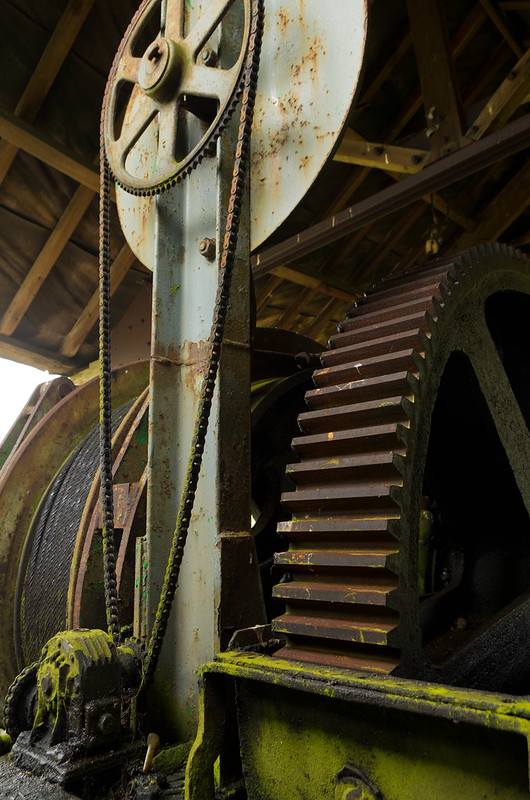
-
2
-
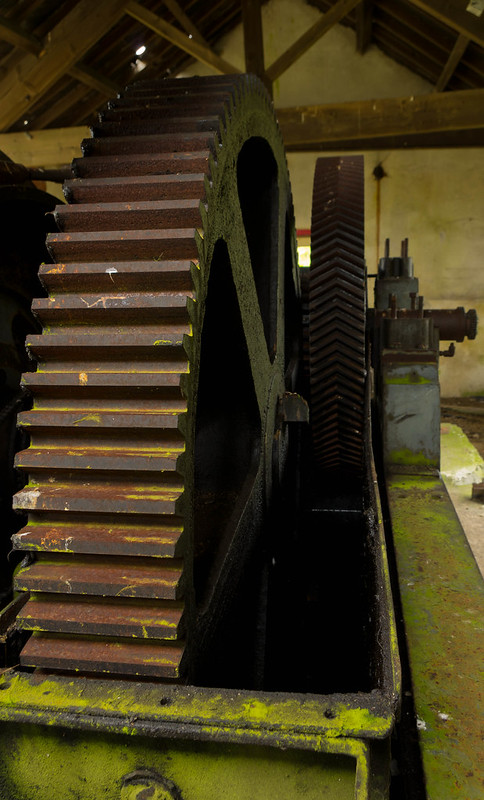
-
3
-
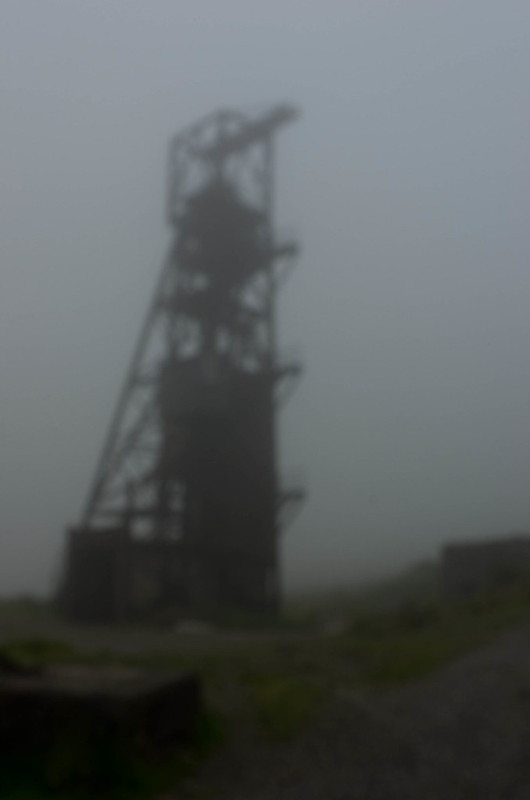
-
4
-
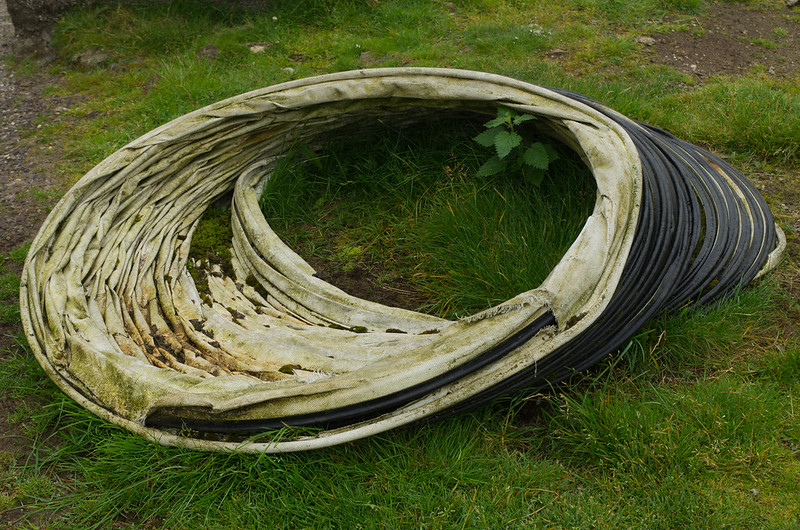
-
5
-
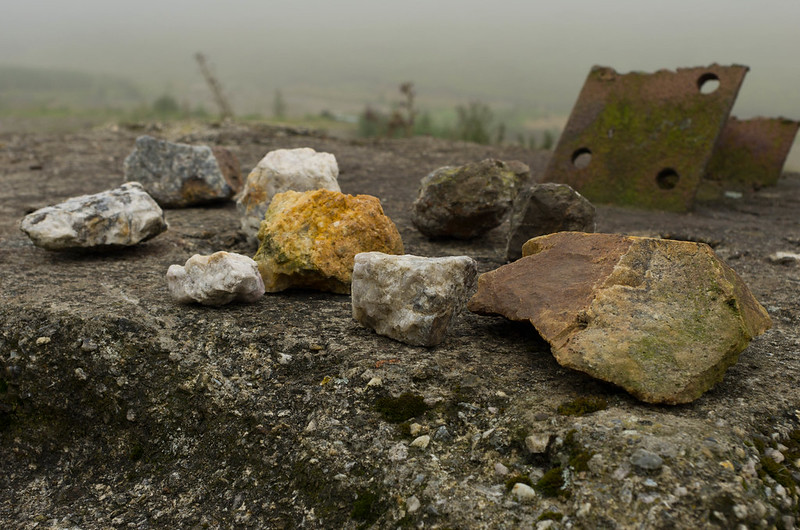
-
I was not alone on site
6
-
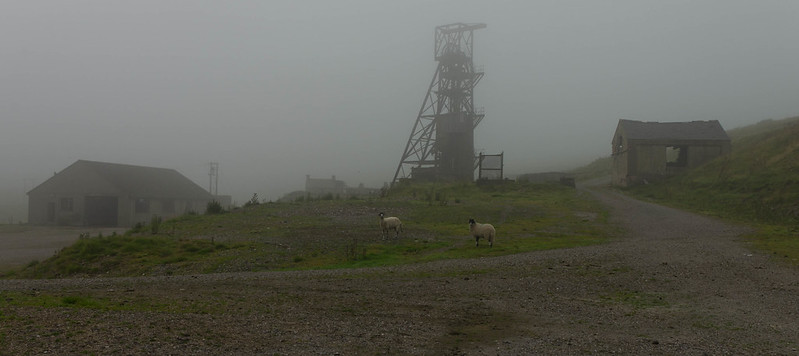
-
7
-
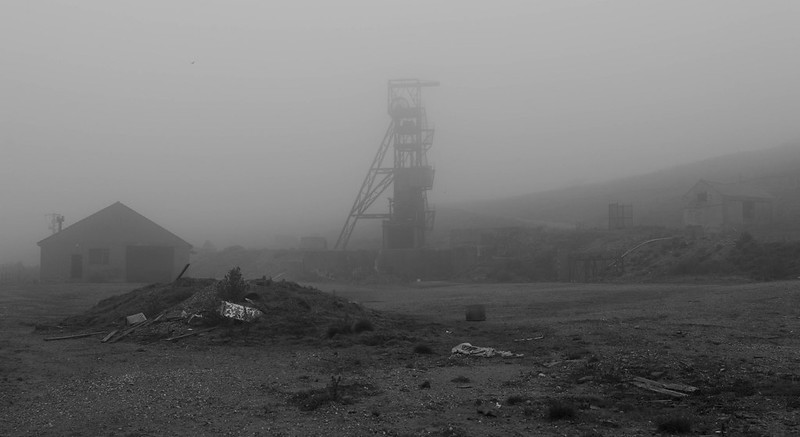
-
8
-
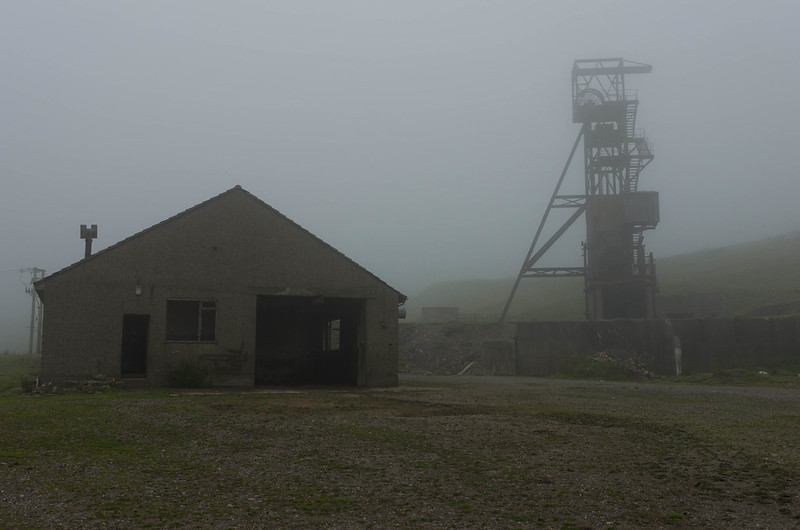
-
Locker area
9
_
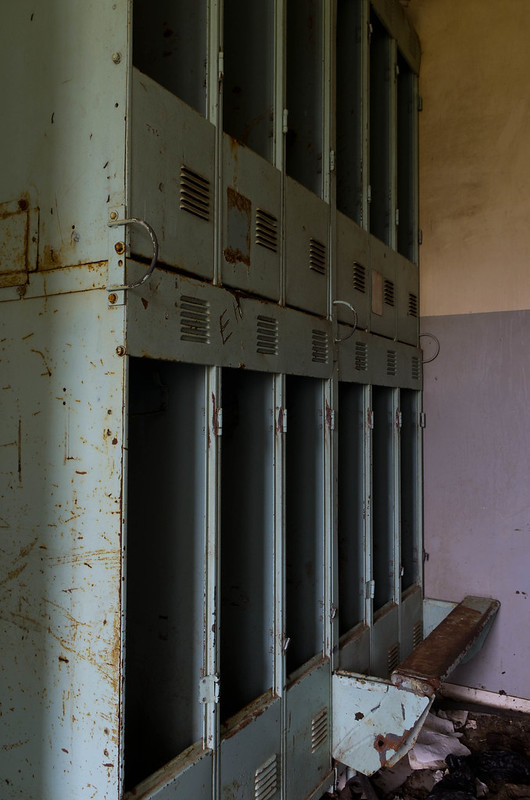
-
10
-
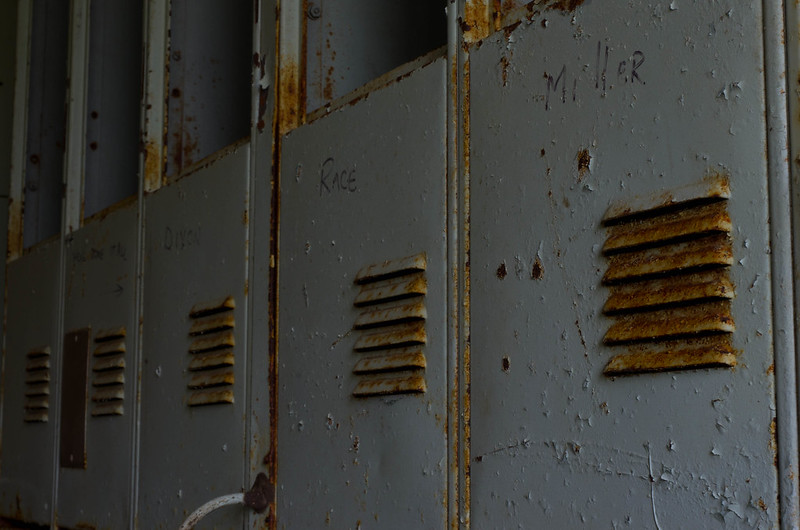
-
11
-
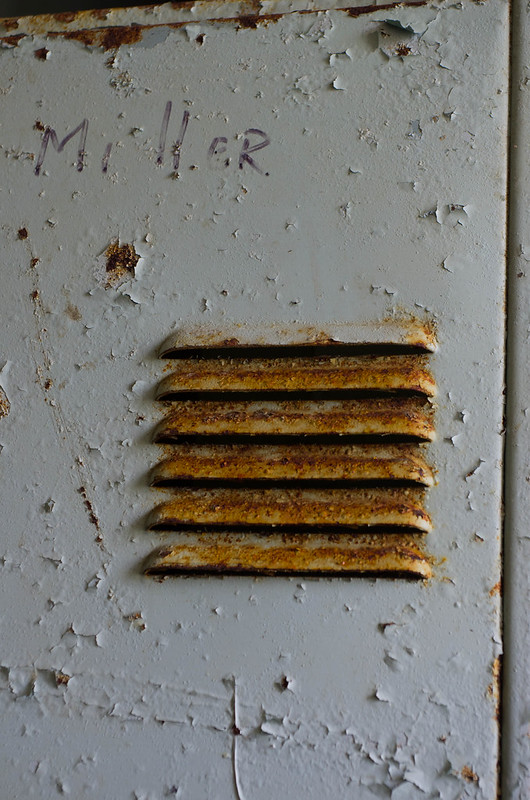
-
12
-
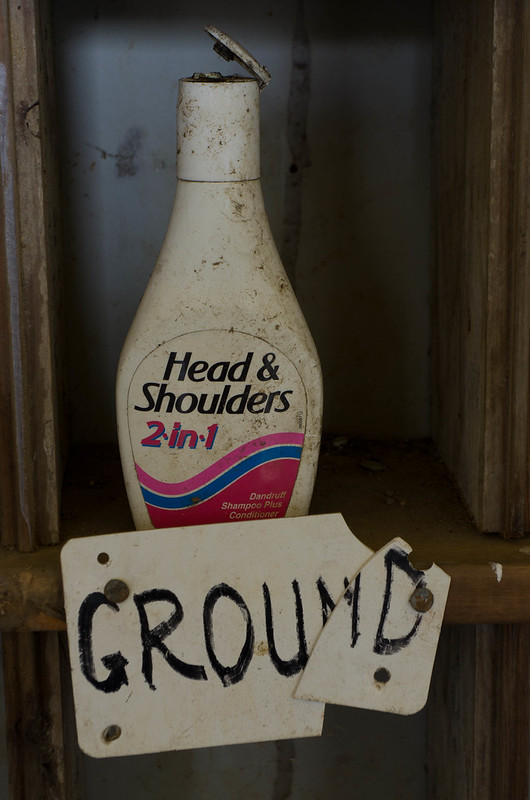
-
Remains of a dead sheep
13
-
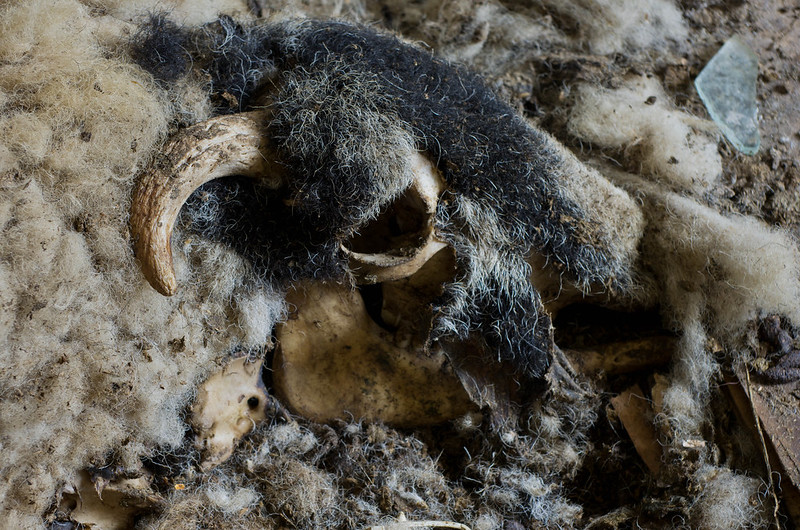
-
Nest of baby swallows
14
-
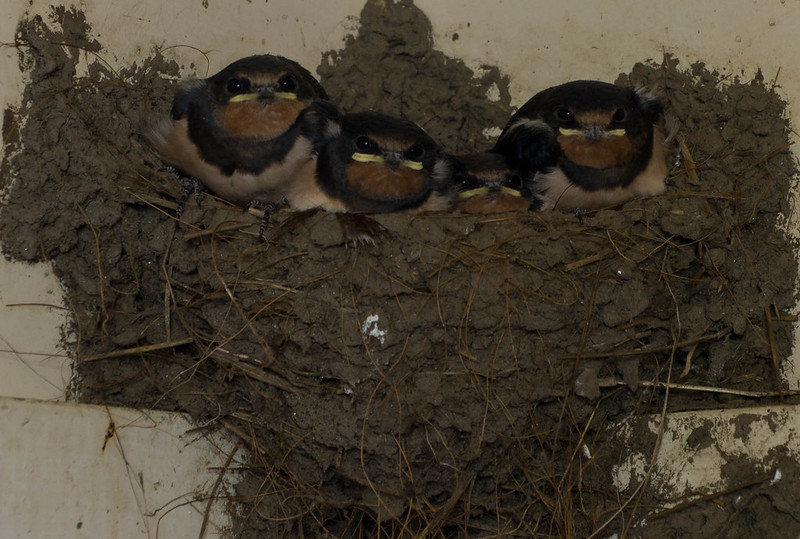
-
15
-
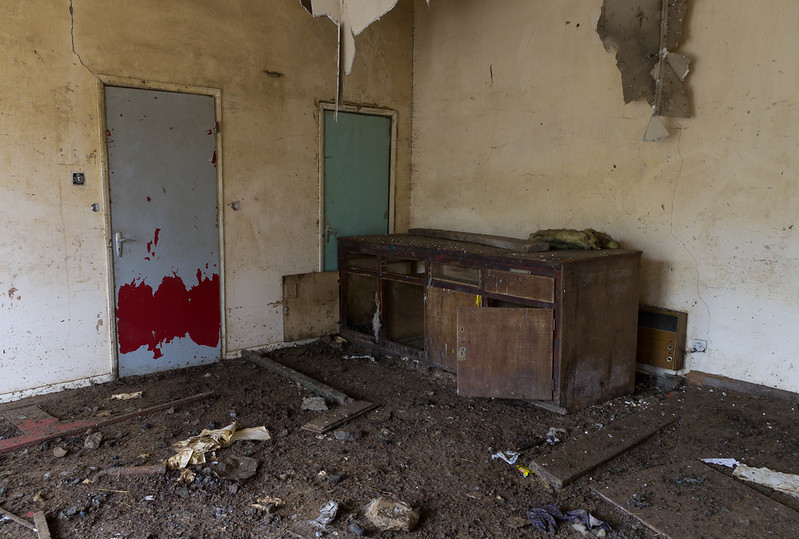
-
16
-
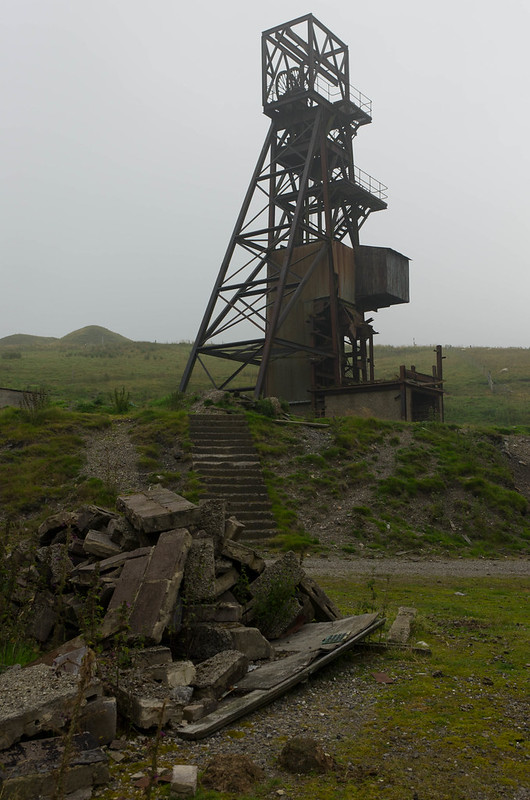
-
17
-
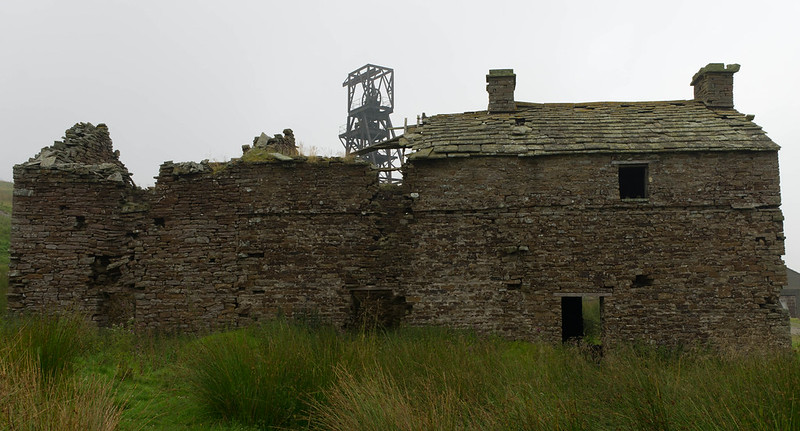
-
18
-
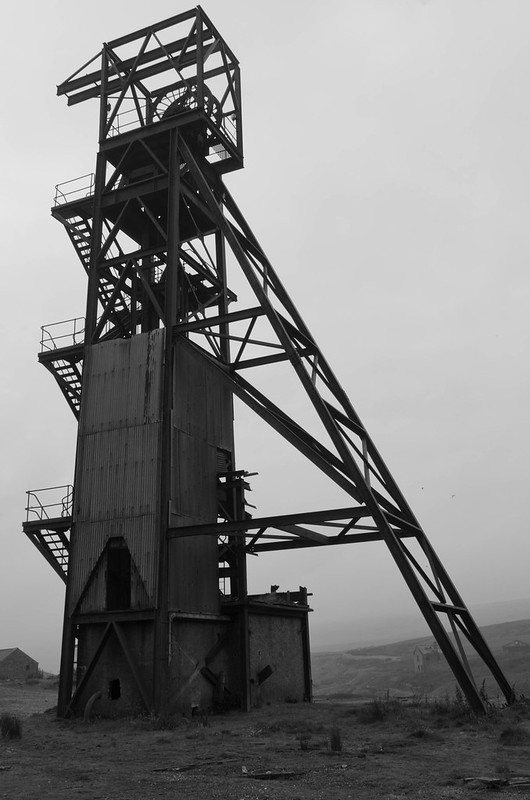
-
19
-
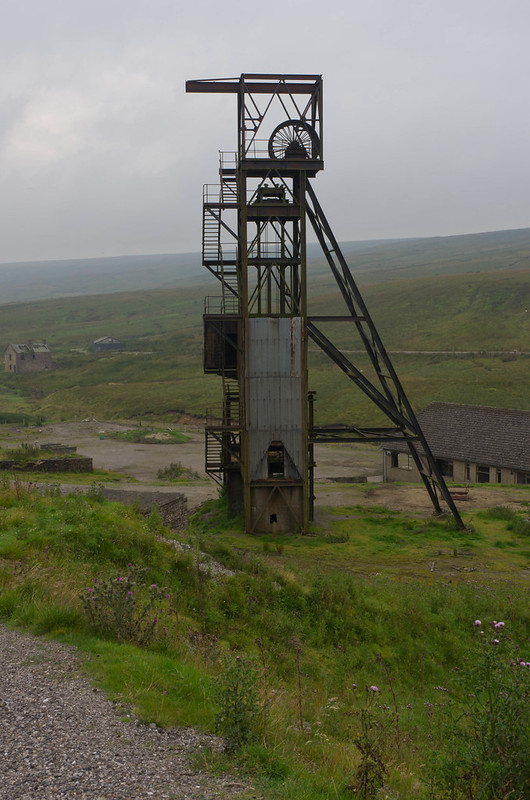
as it seems everyone and their cat has been but here I present it none
the less.
The History.
The Groverake mine is located at the junction of the Groverake, Greencleugh,
and Red veins about 4.5 kilometers northwest of Rookhope, near the head of
the burn. Mining in the area likely predates the seventeenth century, but
major development was started by the Beaumont Company in the late
eighteenth century, including the sinking of two shafts on the Red and
Groverake veins, which ultimately reached levels in and below the Great
Limestone. Although the veins proved rich in fluorspar, they were relatively
poor in lead. Dunham (1990) reported that between 1818 and 1883, they
produced only 6,498 tons of lead concentrates.
With the departure of Beaumont, the mine was picked up in 1884, by the
Weardale Lead Company, which, followed by a succession of several
operators, worked the property for both fluorspar and lead until 1940.
Problems with the treatment of the fluorspar ores to remove silica evidently
limited the success of the mine during this period.
More successful operations were begun during World War II by Blanchland
Fluor Mines, Ltd., and then followed by British Steel. During the British Steel
tenancy, the Rake level was driven northward from the area of the shafts to
access the upper levels of both the Red and Groverake veins, and the
Firestone dib (local term for a decline) was put in to access lower levels on
the same veins. Although these tunnels never interconnected with the shaft-
accessed workings, they are considered part of the Groverake mine complex
(Younger 2003).
Fluorspar deposits on both veins proved rich, and the mine became one of the
top fluorspar producers in the region during the latter part of the century. With
the collapse of British Steel in the early 1980s, the mine was acquired by
Weardale Minerals and Mining, whose parent company, Minworth, Ltd., was
itself forced into receivership in 1991. The mine was then purchased by
Sherburn Minerals and worked until summer 1999. At the time of its final
closure, Groverake was the last commercial fluorspar mine operating in the
North Pennines.
The Visit.
This was first port of call on my trip to the North East. It's a lovely drive up there
with nice winding country roads, little traffic and miles of emptyness - I loved
the area.
On arrival there was a very light mist hanging in the air , which later
developed into a thick fog. This made for some dull looking photos
with little definition. It was a lovely chilled, relaxed mooch which I
rather enjoyed and a shot or two that were a little unexpected.
The Photos.
The fog was a double edged sword as, as it zapped some definition and clarity
it did lend some quite atmospheric shots to the collection - some of which
I really like.
These were taken with the Pentax K5.
So on with the show.
-
1
-

-
2
-

-
3
-

-
4
-

-
5
-

-
I was not alone on site
6
-

-
7
-

-
8
-

-
Locker area
9
_

-
10
-

-
11
-

-
12
-

-
Remains of a dead sheep
13
-

-
Nest of baby swallows
14
-

-
15
-

-
16
-

-
17
-

-
18
-

-
19
-


































